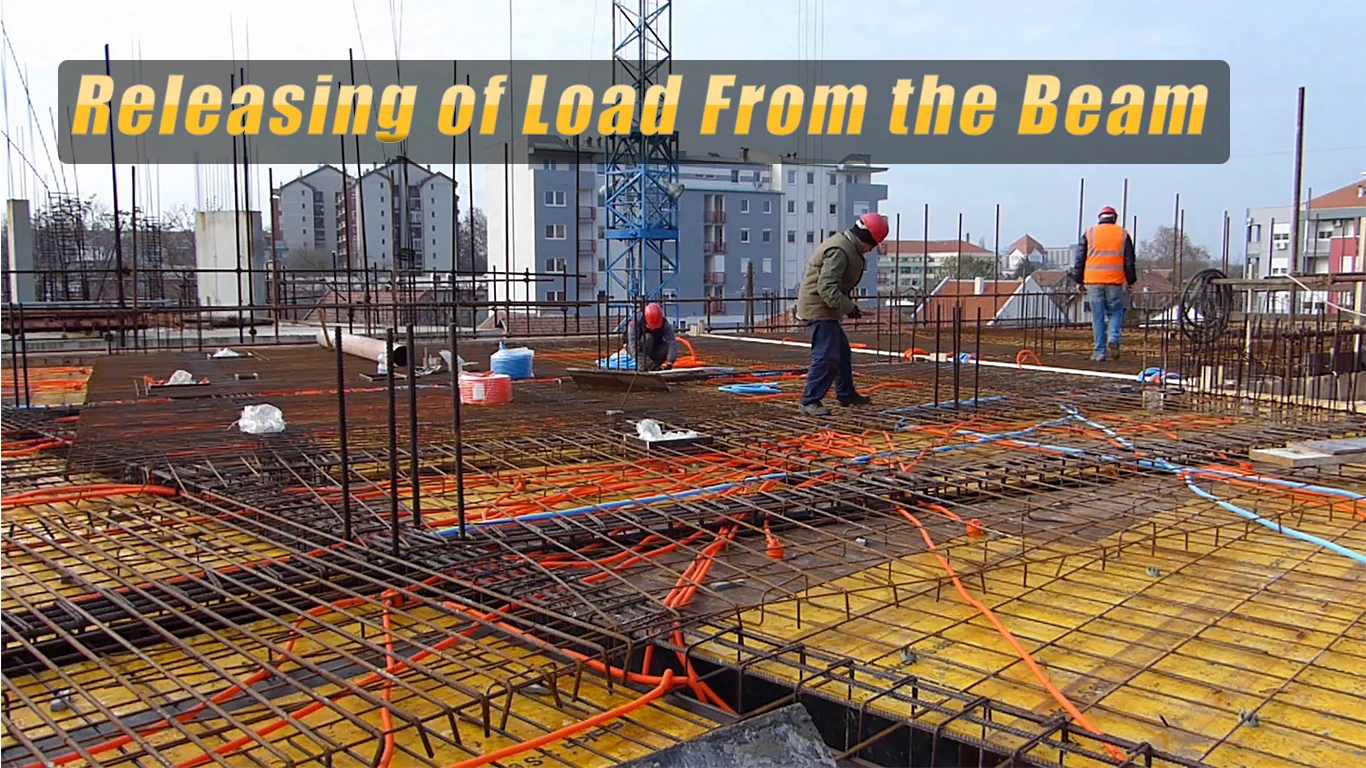Releasing of Load From the Beam

Releasing of Load From the Beam
When the RCC beams are under loaded condition, if we add a layer of new concrete in the compressive zone the load due to self weight of the new concrete will also contribute for additional stress before setting hardening.
Even after hardening when further loading comes on the beam the new concrete is getting stressed from zero whereas the old concrete will be stressed further to the existing stress and also there will be much stress variation in the concrete in the compressive zone. This may lead to make the section not to behave monolithically. To avoid such problem the stress in the beam is temporarily released by releasing the load on the beam by transferring the load on the beam to the temporary supporting structure provided with adjustable props and with hydraulic jack.
Now the concrete and steel in the beam are free from stress and ready for retrofitting. After the hardening of the retrofitting materials releasing of the support from the beam will make the section to behave monolithically. It is one of the important major procedures to be maintained for the better of the retrofitted beam. Stain gauges and dial gauges (deflectometers) shall be used during this load releasing operation for optimum lifting and releasing.
Adding Concrete In The Compressive Zone
The required thickness “t” and the grade of the additional layer of concrete are provided in the compressive zone to take care of the compressive stress increase due to the additional load. It is also possible to provide additional reinforcement in side new concrete at the time of adding new layer of concrete to the existing beam section with sufficient number of shear connectors.
When adding the concrete in the compressive zone of the beam, it very important to see that the new and old concrete behave together as a monolithic section for better efficiency of the section. To make the old concrete and new concrete monolithic, both mechanical and chemical systems are used during retrofitting.
Shear connectors are provided at equal spacing to act as a mechanical key between the new and old concrete and Epoxy adhesives are used as chemical bonding between new and old concrete. Normally 10 mm diameter bars are fixed in the old concrete beam by drilling a hole for a depth of not less than 75mm and diameter of 12 mm. Then one end of the rebar of about 250 mm long is grouted in to the 75mm deep hole drilled using polyester resin compound and other end is bent in to the new concrete. Such keys provided are called shear connectors to act as a key between the old and new concrete to hold them together and to make them behave monolithically. In addition to these shear connectors, a coat of epoxy base adhesives are applied to the old concrete surface to provide a chemical bonding between the new and old concrete.
Providing CFRP As Surface Reinforcing System In Tensile Zone
The deficit in the reinforcement is calculated by analyzing the old section and new section and the equivalent quantity of CFRP to be provided is calculated. The CFRP can be provided in any one of the forms depending upon the site condition and quantity requirement. These CFRP systems are provided in any one of the following forms
- Carbon Fiber Sheet
- Carbon Fiber Laminates
- Carbon Fiber Bars / rods
These CFRP systems are fixed to the surface of the tensile zone of the beam using the special epoxy based adhesive over the concrete








